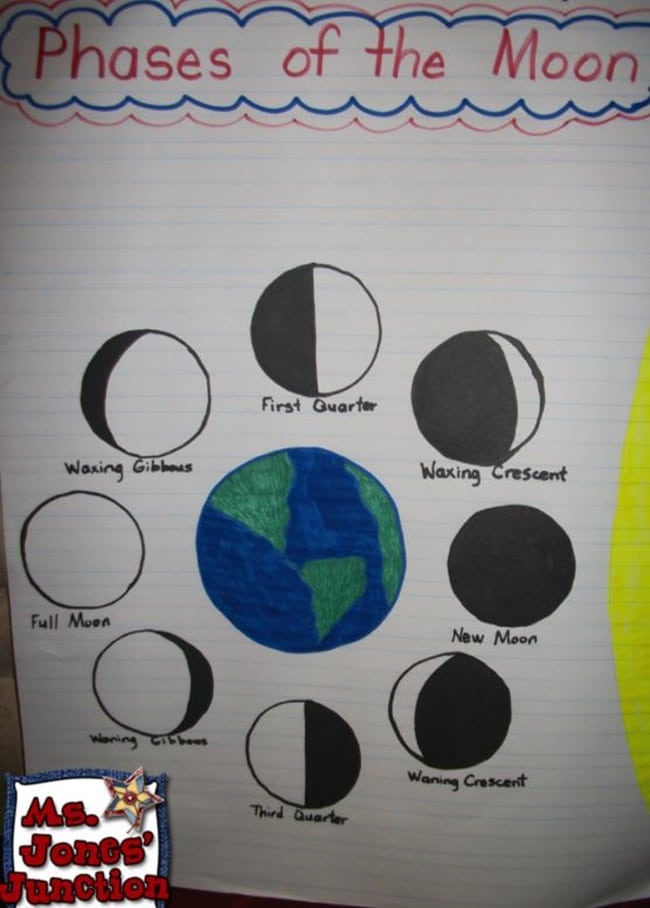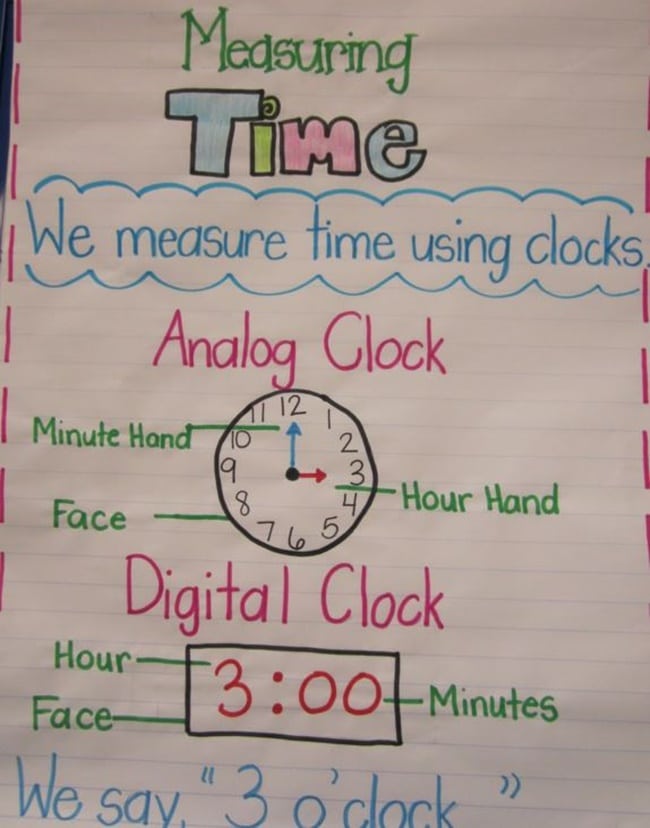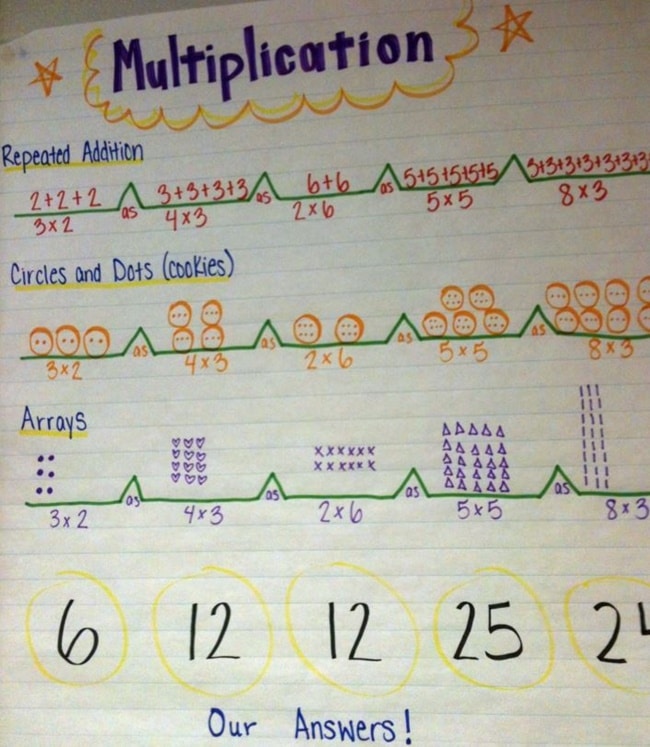Creating anchor charts that are handy references is made easier when you see a few examples. Here are 9 anchor charts that are perfect for displaying along with your content in science, language arts and math.

Use these 9 anchor chart tips as inspiration to create ones for your curriculum or as a perfect fit if it matches your grade!
Science Anchor Charts

1. Anchor Moon Chart – Kick the visuals into high gear if you’re working on physical science with this phases of the moon anchor chart.

2. Types of Energy – Perfect for listing out tough concepts like the different types of energy in a fith grade unit. Use colors to help keep categories separate.
Anchor Charts for Math

3. Measuring Time – If you’re introducing concepts like time and how to read an analog clock adding the most pertinent information is key. Keep it simple and get vocabulary you expect your students to use in there!
4. Halves and Quarters – Create lists together when comparing frequently confused items. This collaborative effort will make the examples listed out more memorable to students. Make it stick!

5. Brace Maps – Use a variety of ways to model content to help students recall strategies with visuals. The visuals will go a long way when they try to recall when/why to apply strategies.
ELA Anchor Charts that Rock
6. Describing Tacky the Penguin – If your anchor chart’s content is very focused then make it big! Fill the center with a memorable image and surround it with the highlighting facts.

7. Cause and Effect – Draw attention to your main concepts by creating an anchor chart that fits your biggest need. If you want to create a list with examples – use arrows, lines and color to bring it to life.
8. Writing Process Anchor Chart – See how you can easily teach the same concept like the writing process and alter it to fit your grade level. There are examples of multiple anchor charts on the same topic.
9. Teaching Vocabulary Strategy – Break down how to use a strategy with the steps to using it successfully in a simple chart that is handy at all times. Keep it posted so students can use it!
I hope you found these anchor charts and tips on how to make an anchor chart handy. Thanks talented teachers – your t are great! Feel free to share your “I’m a Featured Teach Junkie” badge on your blog, facebook or instagram. You earned it! {{boo-yah}}
Share your teaching idea here on Teach Junkie. We love hearing from teachers, teacher-bloggers and from you! Join the Teach Junkie Community and be a part of this collaborative blog.
P.S. Don’t forget to check out the Teach Junkie Facebook page. It’s a great place to ask questions on how to make things or for specific lesson ideas/collections that you are looking for. I’ll be happy to find them for you!
| SUBMIT YOUR TIP |
More on How to Teach
- Making the MOST out of Class time with Teaching Videos
- Primary Games To Make Teaching Standards Easier
- 6 Hilarious and True Teacher Confessions
- Teacher Organization – How to Organize Materials for the Week
Leslie {aka the original Teach Junkie} loves learning new things to make teaching easier and more effective. She enjoys featuring creative classroom fun when she's not designing teacher shirts, making kindergarten lesson plans or planning her family's next trip to Disney World.
